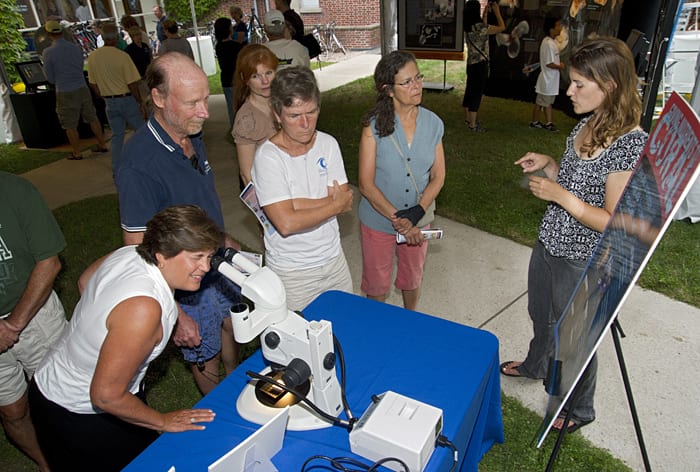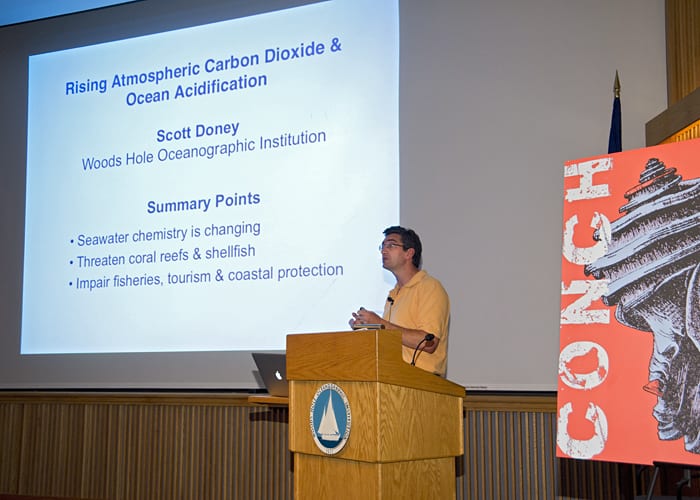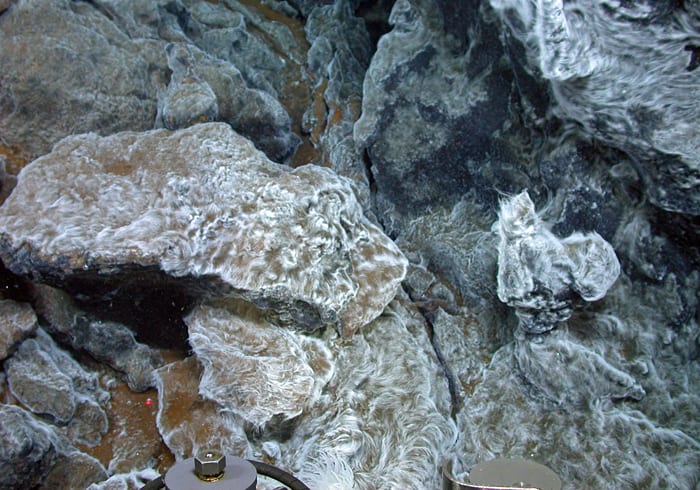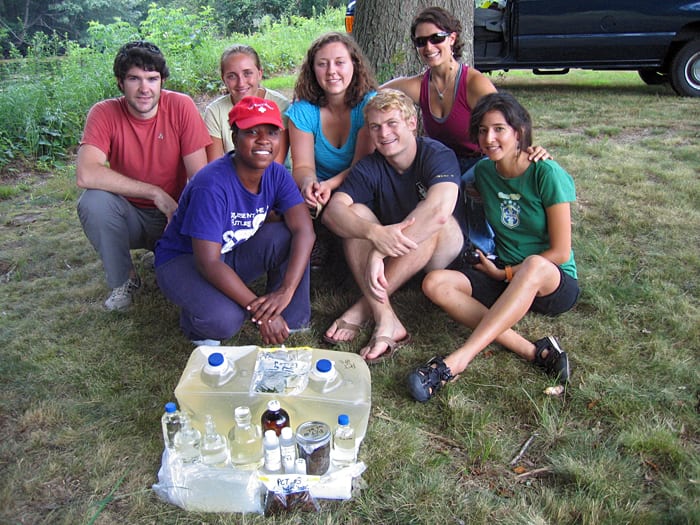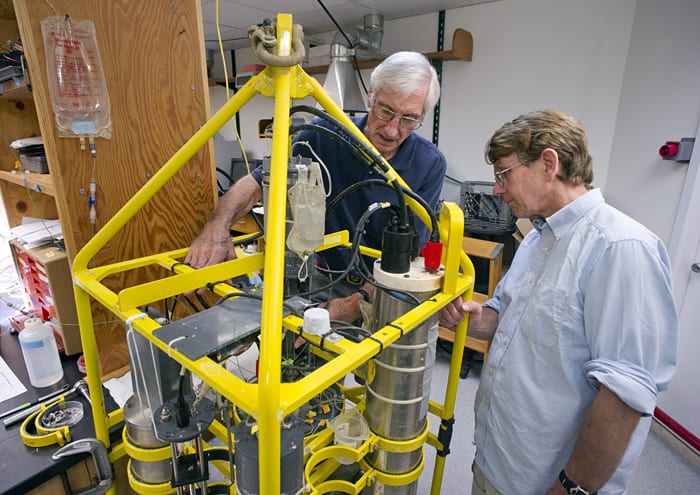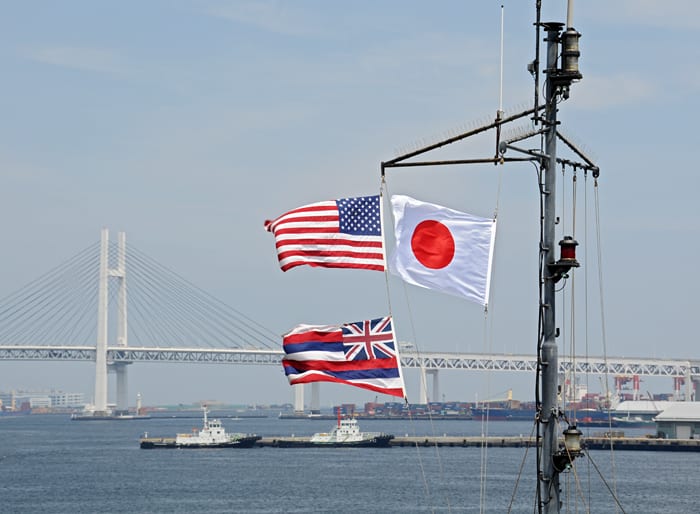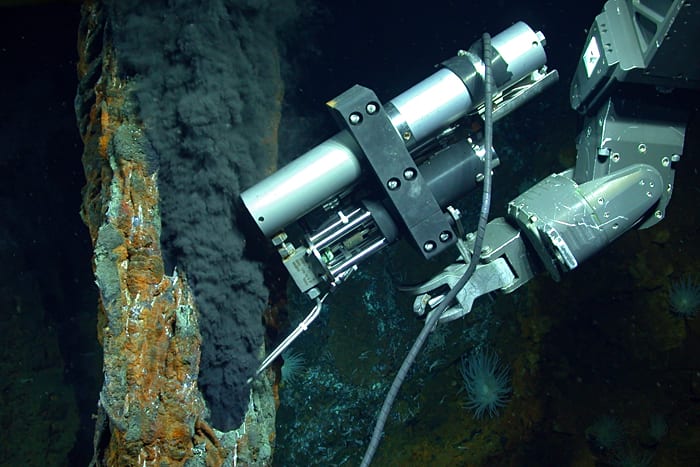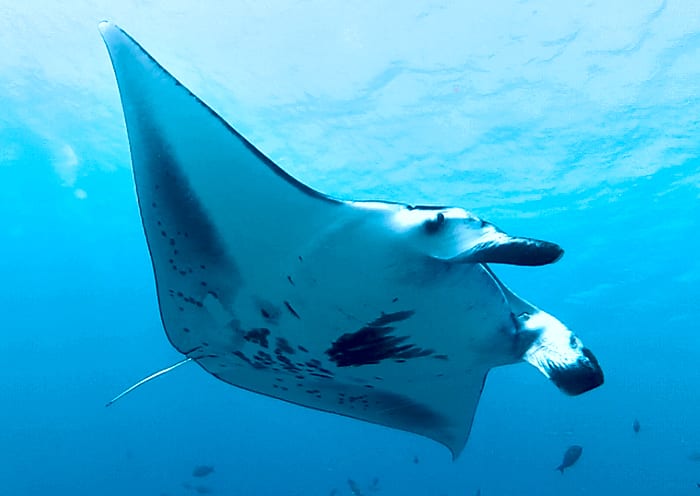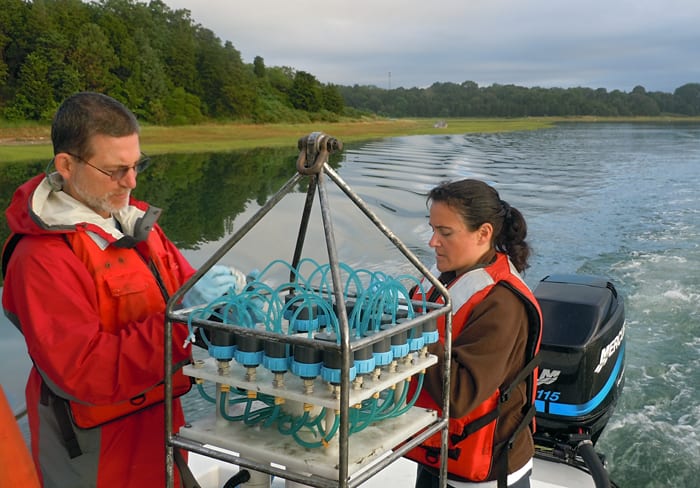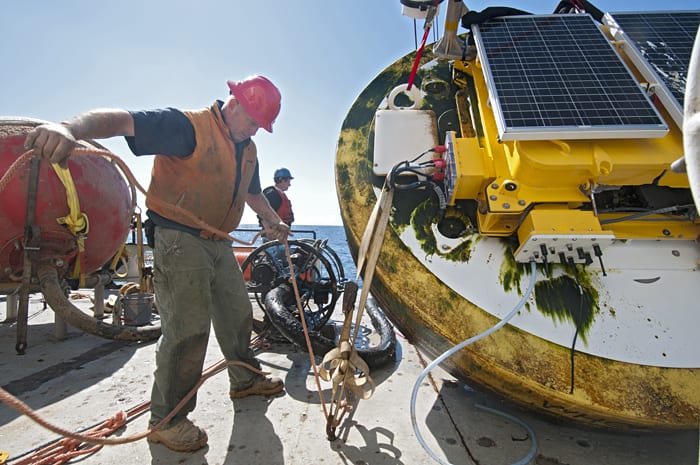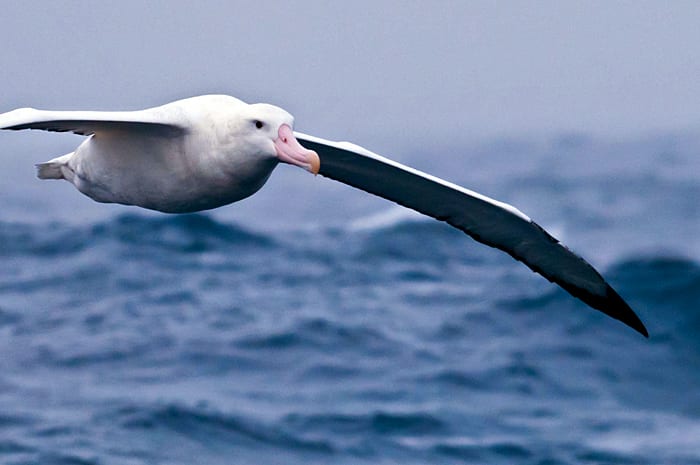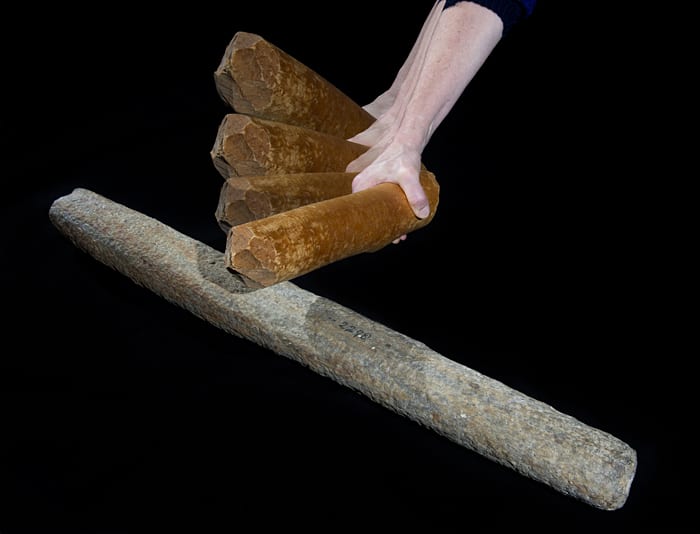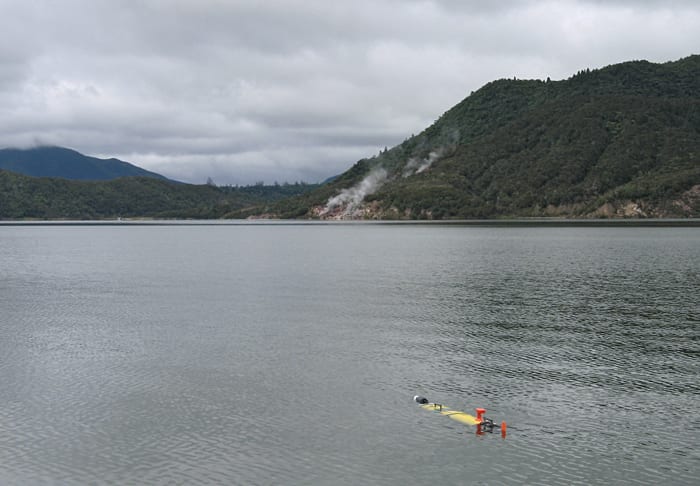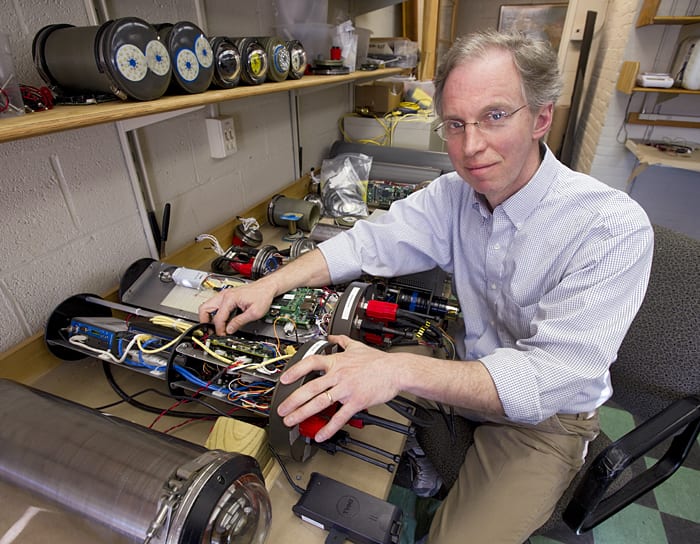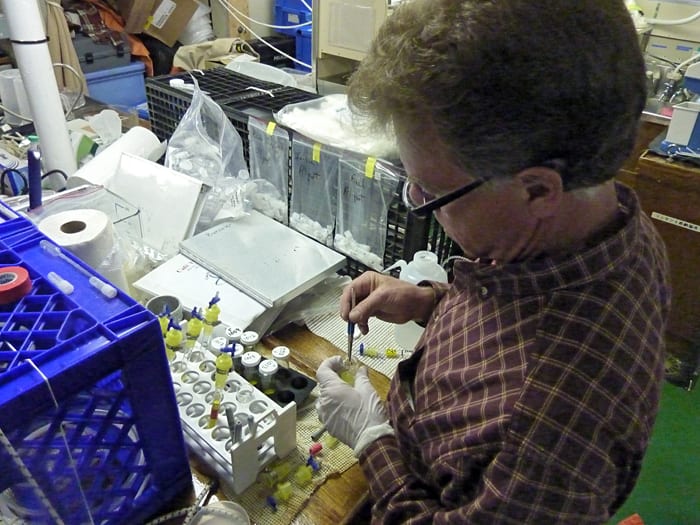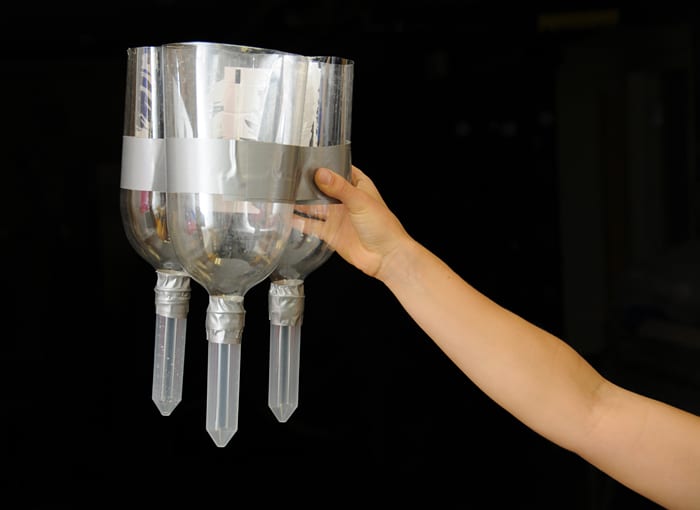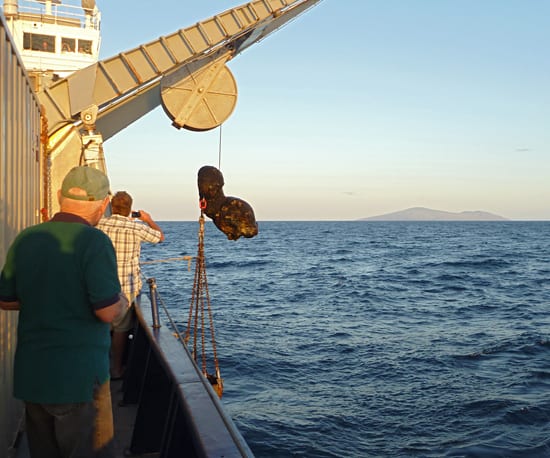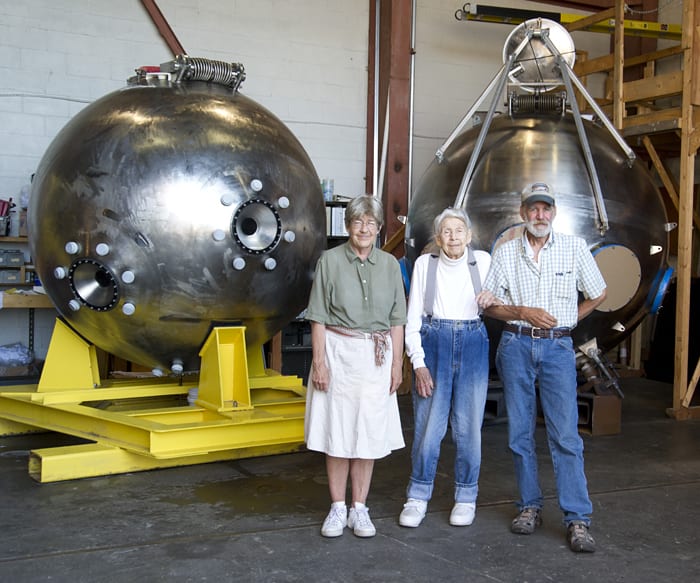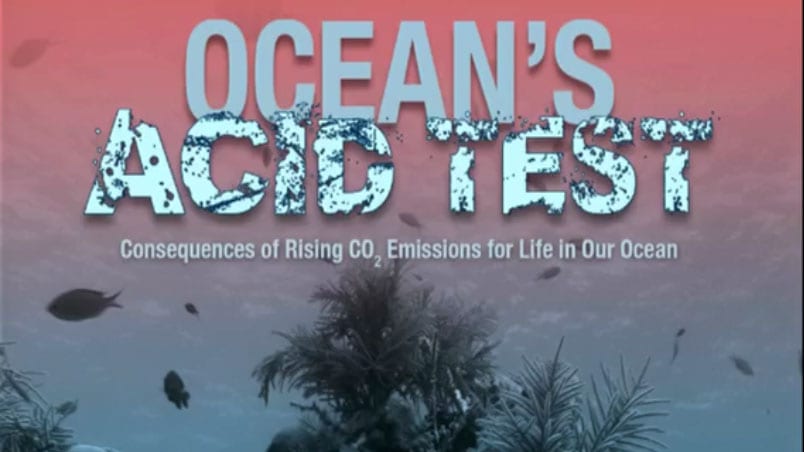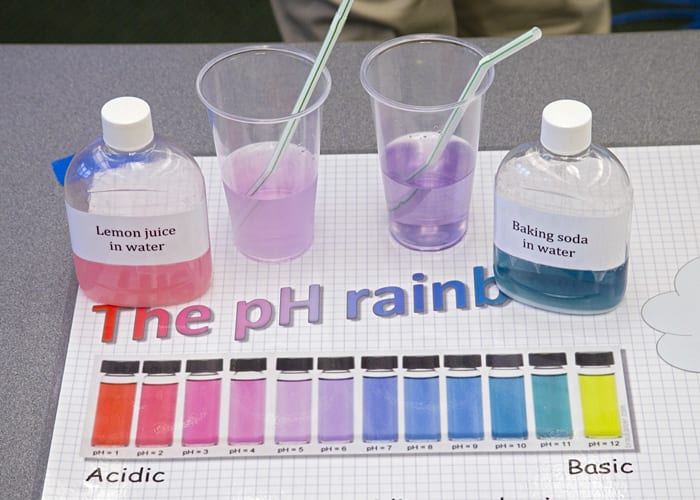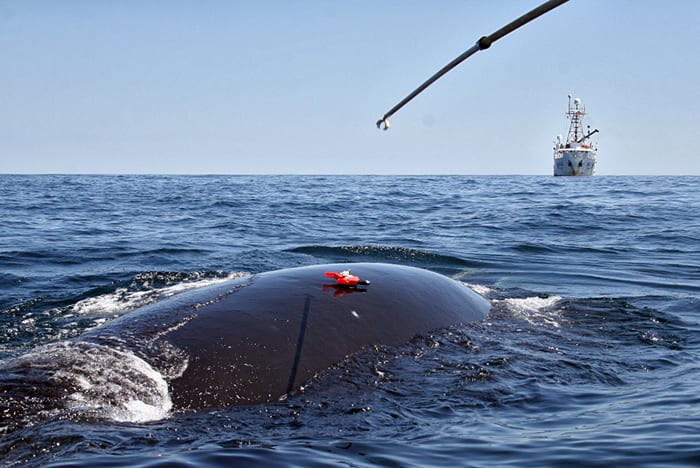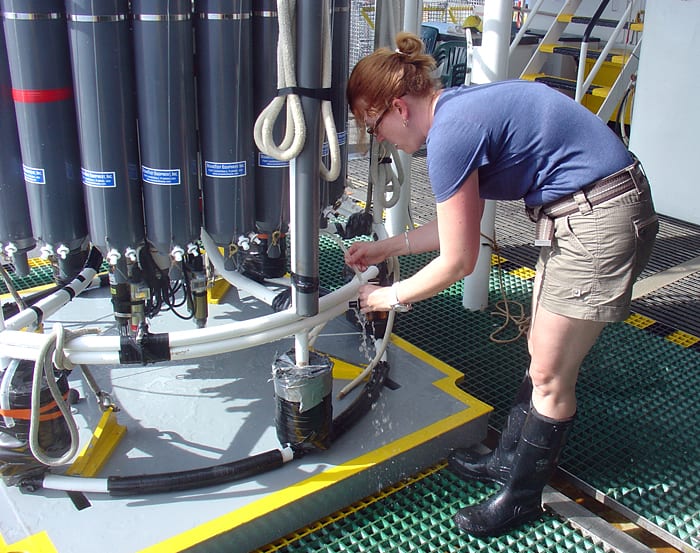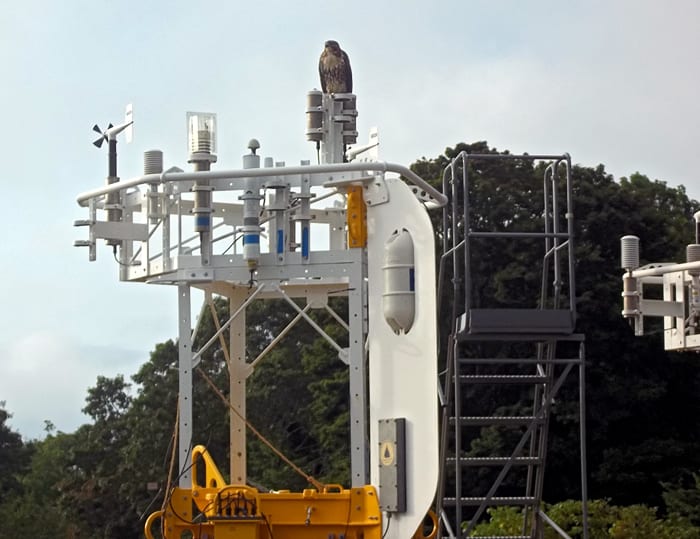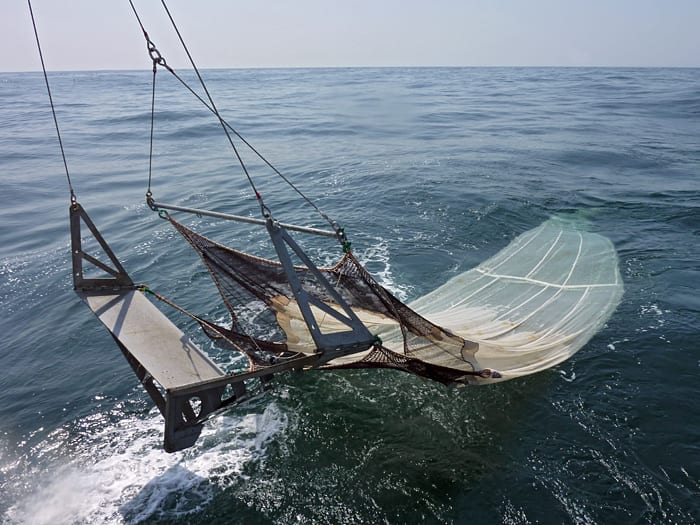Multimedia Items
Hands-on Climate
Participants at a WHOI-sponsored event on ocean acidification in August examined the skeleton of a two-week-old coral grown by MIT/WHOI Joint Program student Liz Drenkard (right) for her climate change research.…
Read MoreThe Ocean’s Acid Test
In early August, WHOI marine biogeochemist Scott Doney spoke at a public event on ocean acidification, a problem arising from the burning of fossil fuels and the subsequent increase in…
Read MoreFurry Walls
In January 2012, an international research group aboard R/V Atlantis completed an expedition to study the world’s deepest known hydrothermal vents, at the Mid-Cayman Rise in the Caribbean. The group,…
Read MoreUpriver Gang
Every other month since March, students and researchers lead by WHOI marine geochemist Bernhard Peuker-Ehrenbrink have taken water and sediment samples from four rivers in southern Massachusetts and Rhode Island.…
Read MoreRATS Ready for Duty
WHOI marine chemists Fred Sayles (left) and Bill Martin have spent the last several years designing and developing a water-measuring device they call RATS, for Robotic Analyzer for the Total…
Read MoreIn the Wake of a Disaster
In March 2011, Japan’s Fukushima Daiichi nuclear power plant, crippled by a tsunami, released a record amount of radioactive material into the ocean. Three months later, WHOI marine chemist Ken Buesseler…
Read MoreReady, Aim, Sip
During an “Oasis” cruise to the Mid-Cayman Rise in January 2012, the manipulator arm of the remotely operated vehicle Jason placed the intake tube of an isobaric gas-tight sampler (IGTS)…
Read MoreGentle Giant
In June, WHOI postdoctoral student Kelton McMahon and colleagues attached tags to nine giant oceanic manta rays in the Phoenix Islands during a month-long research trip to observe the ecology…
Read MoreTracking Ocean Toxins
From the deck of the Coastal Ocean Institute vessel Calanus, Linda Amaral-Zettler of the Marine Biological Laboratory and Erik Zettler of the Sea Education Association prepare to deploy an automated water sampler in Nauset Marsh.…
Read MoreBringing them Home
WHOI mooring operations specialist Jim Ryder secures a surface buoy to the deck of RV Knorr during a cruise to recover instruments deployed in October 2011 as part of the…
Read MoreMiracles of Flight
Albatrosses captivated scientist Philip Richardson during his physical oceanography career at WHOI, where he watched the large seabirds soar near the decks of traveling research vessels. After he retired in 1999,…
Read MoreRock On!
A person uses a piece of wood to strike a lithophone, an instrument made of solid stone by Native Americans between 1,000 and 2,000 years ago. When struck, the lithophone…
Read MoreIn Search of Lost Treasures
A REMUS 100 from Woods Hole Oceanographic Institution makes its way across Lake Rotomahana, New Zealand, in January 2011. Geologists in New Zealand enlisted the help of WHOI scientist Dan…
Read MoreTalking Through Water
Scientists strive to quickly recover data after it is collected from ocean depths, a process that is often cumbersome and costly. WHOI engineer Norman Farr and his colleagues have helped…
Read MoreHome Away from Home
No matter what the nationality, the interior of virtually any research vessel becomes recognizable as a floating scientific lab almost as soon as it leaves port. Still, some differences remain.…
Read MoreSometimes Low-Tech is Best
Not every scientific experiment requires expensive equipment. As Hurricane Irene advanced up the East Coast in August 2011, WHOI postdoctoral scientists Pete van Hengstum and Andrea Hawkes and their colelagues…
Read MoreReeling in a Big One
In 2010, scientists aboard the research ship Melville investigated seafloor volcanism near the Galápagos Islands by lowering a chain-metal basket called a dredge via a steel cable to the seafloor to…
Read MoreAlvin’s First Family
After the original submersible Alvin was built in the 1960s, it was named for Allyn Vine, a leader in developing manned submersible vessels for exploring the deep sea. This summer…
Read MorePresentation: Ocean’s Acid Test
Originally published online August 12, 2012
Read MoreThe Ocean’s Acid Test
Seawater has a pH of around 8.2 on average, meaning it is slightly alkaline. For the past several decades, however, that number has been slowly, but perceptibly dropping, making the…
Read MoreHide and Seek
A WHOI biologist attaches an archival suction-cup tag to a North Atlantic right whale in 2010 while the NOAA Ship Delaware II stands ready to begin environmental sampling nearby. The…
Read MoreEarning Her Sea Legs
On occasion, non-scientists at WHOI earn valuable at-sea experience by volunteering aboard a research vessel. Here, Sarah Xander, an administrative associate in the Physical Oceanography Department, extracts a water sample from…
Read MoreMulti-purpose Instrument
To an oceanographer, this is an ocean buoy, but for a Cooper’s hawk, it’s an ideal hunting perch. The buoys, called ocean reference stations, spend months at sea equipped with…
Read MoreTowing a Trawl
This large trawl net was deployed from the research vessel Tansei Maru off the coast of Japan to collect large zooplankton, small fish, crustaceans, and squid at middle depths of…
Read More
